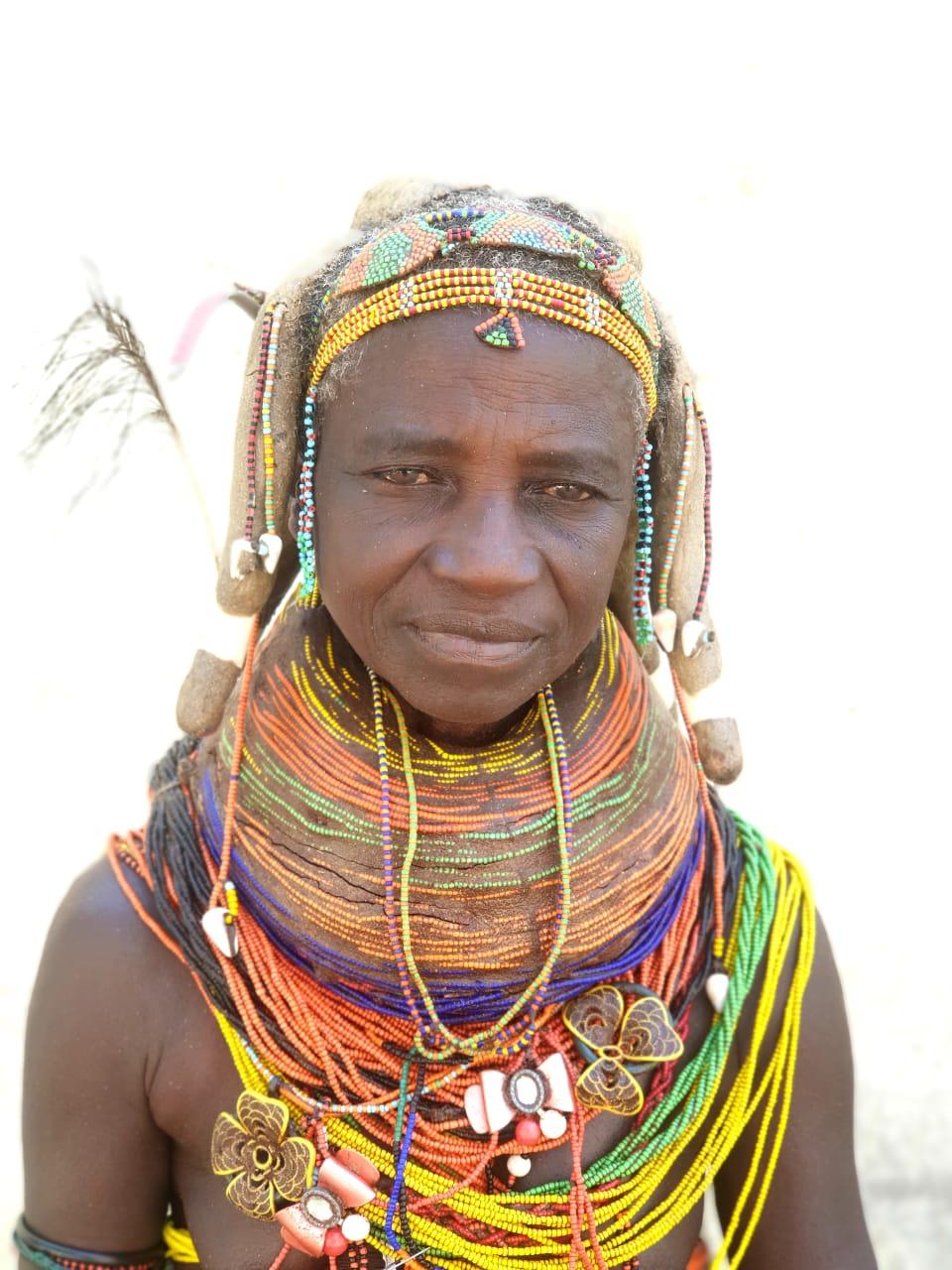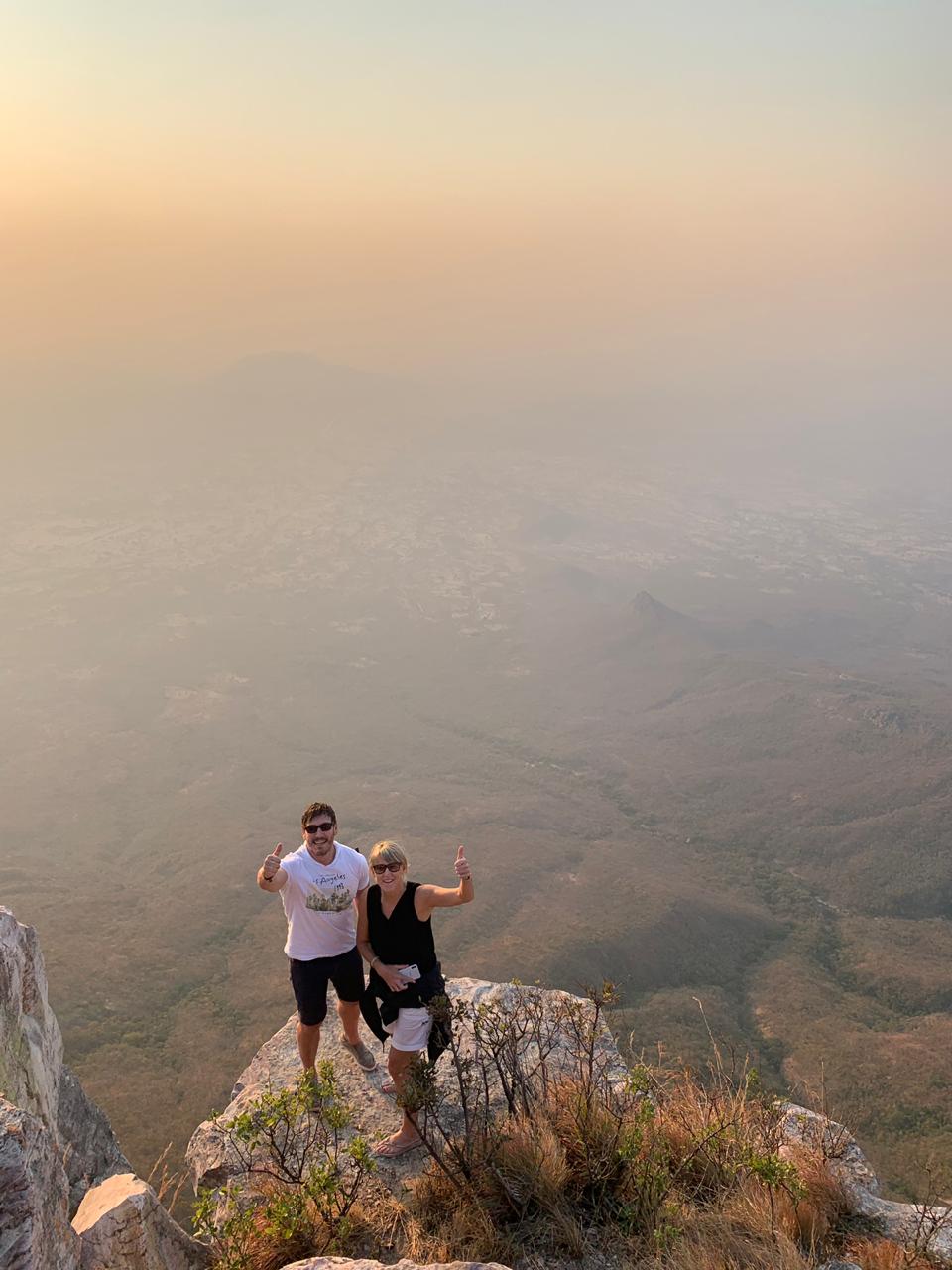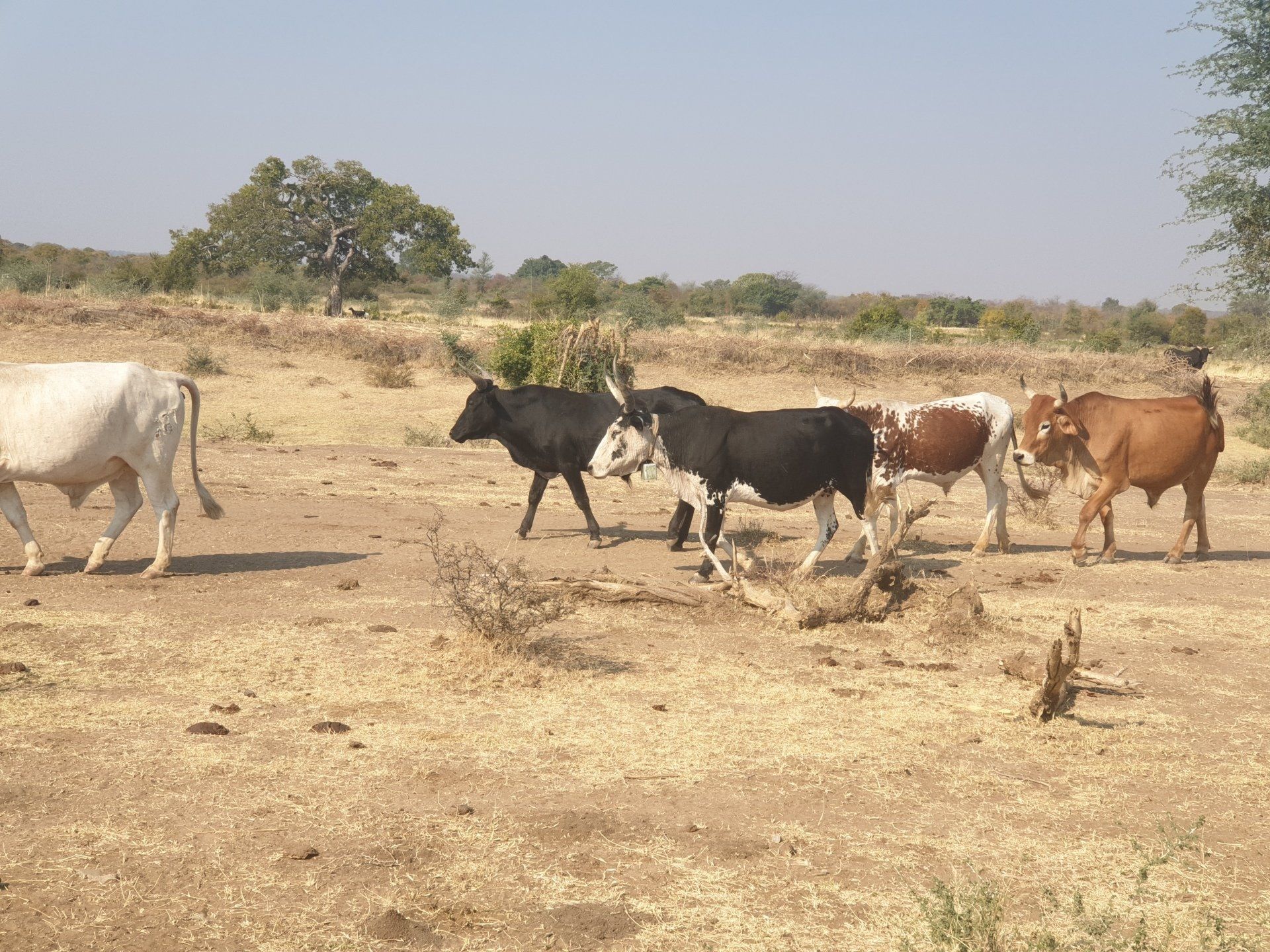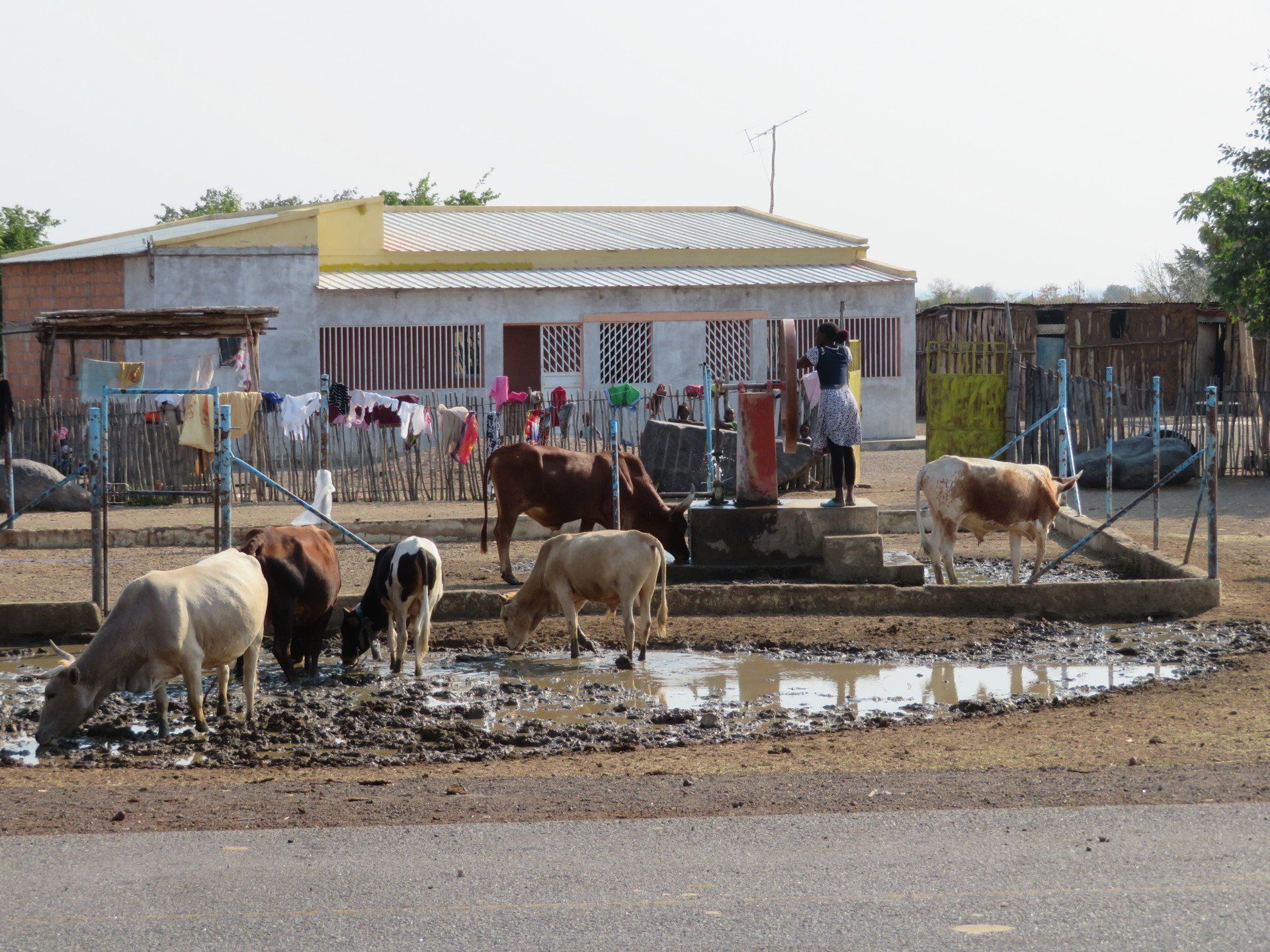Namibia – Angola Educational
- by Jana Meyer
- •
- 29 Aug, 2019
- •
"Angola is one of the hidden gems in Southern Africa - waiting for tourists to explore its amazing landscape and culture. I can't wait to travel back and explore more." – Kerstin Bahnmüller
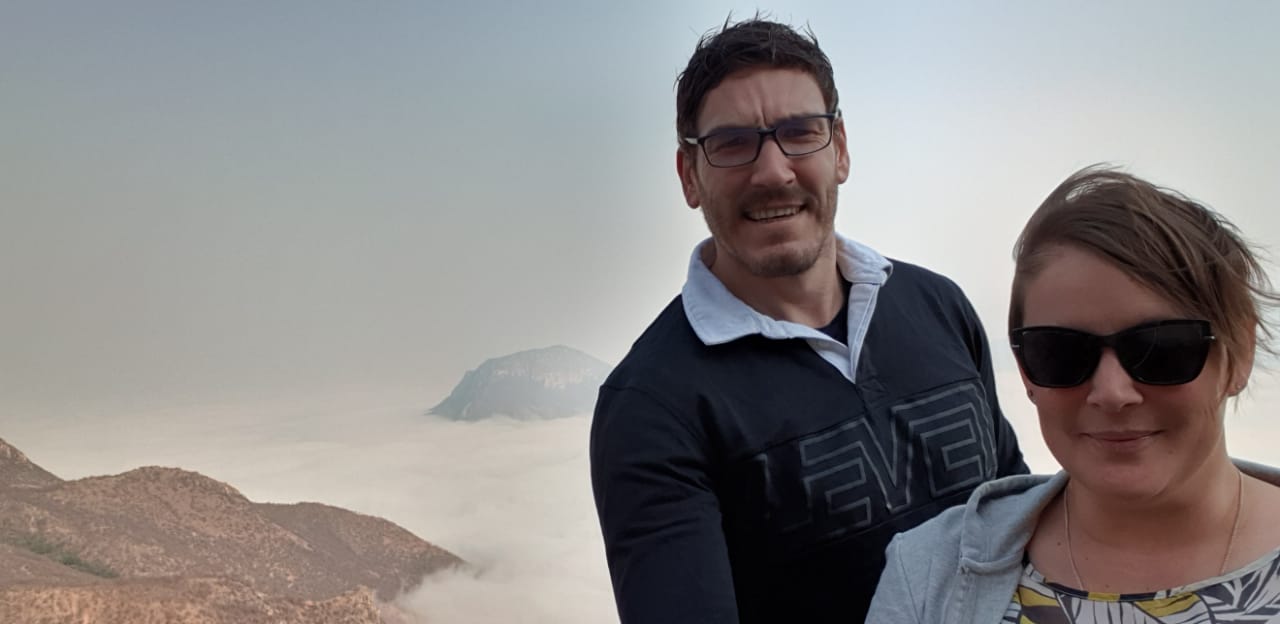
We know Namibia like the back of our hand but to be honest, haven’t explored Angola that much and missed out on an amazing and beautiful country. Kerstin and Mark were happy to have done this educational and we can now gladly say that Angola is our new destination in Southern Africa.
Read here about their experiences, travel tips and hidden gems.
Day 1: Windhoek – Okahandja – Outjo – Kamanjab
We flew to Namibia the night before so that our journey could start early the next day. Well prepared with water and snacks, we drove half way north. Driving in Namibia is not boring at all – the colors and the landscape are just amazing and it’s definitely worth to stop a couple of times to take some nice pictures (as we did).
In the afternoon, we arrived at our first stop: Otjikandero Himba village just outside Kamanjab. Here you can go on a tour through the Himba village and learn about their daily life, their beliefs and culture.
After the tour we reached our lodge for the night, called Oppi-Koppi, which is a small lodge in the heart of the Himba area.
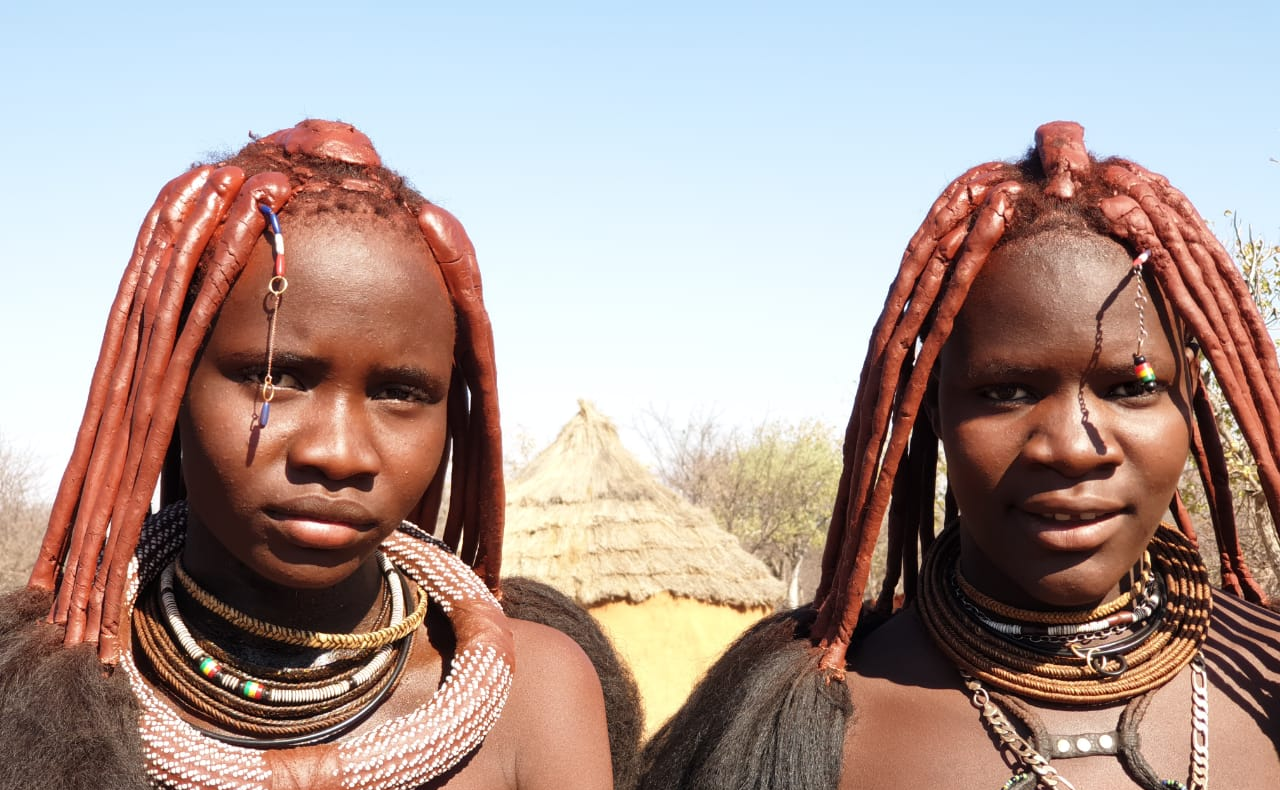
Day 2: Kamanjab – Etosha Nationalpark – Ruacana
We started the day with an early breakfast and headed to the western Etosha Gate: Galton Gate, which is only a few kilometres away. We did a three hour game drive and were blessed with sightings! We all know there is never a guarantee for good sightings in the wild, so we were very happy about our luck ;)
After the game drive, we continued north towards Ruacana to see the Ruacana Falls.
The Ruacana Falls have their origin, like the Epupa Falls, in the Kunene River. Close to the village Ruacana, the Kunene river coming from Angola, makes a sharp bend to the west to form the border between Namibia and Angola until it flows into the Atlantic Ocean at the Skeleton Coast. It plummets into a 120 metres deep and 700 metres wide gorge and thus forms the impressive Ruacana Falls.
When we arrived at the viewpoint, we were curious as to what awaited us. We were warned that we would have to climb more than “250 stairs“ but we were of course not discouraged by 250 steps and went anyway. Due to weather and erosion, some of the stairs were broken so it was an adventurous, but totally doable way down. Halfway down we saw the falls. At that moment, they were more like a small dip of water and not as huge as we expected but the scenery was simply stunning! The full strength of the falls can best be experienced during high water in April / May.
We stayed the night at Ekamuti Town Lodge in Ondangwa – the perfect location to start our Angola adventure.
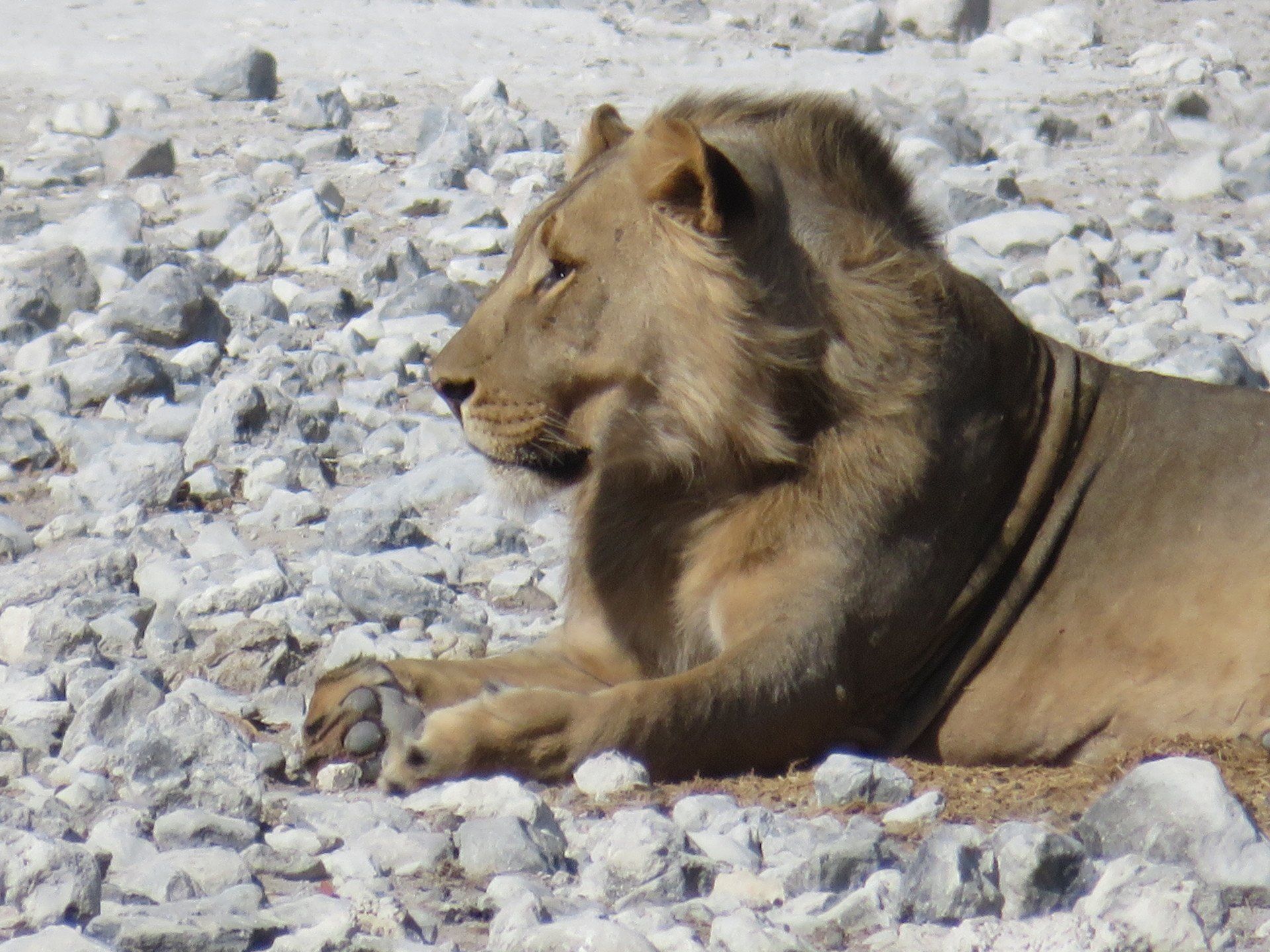
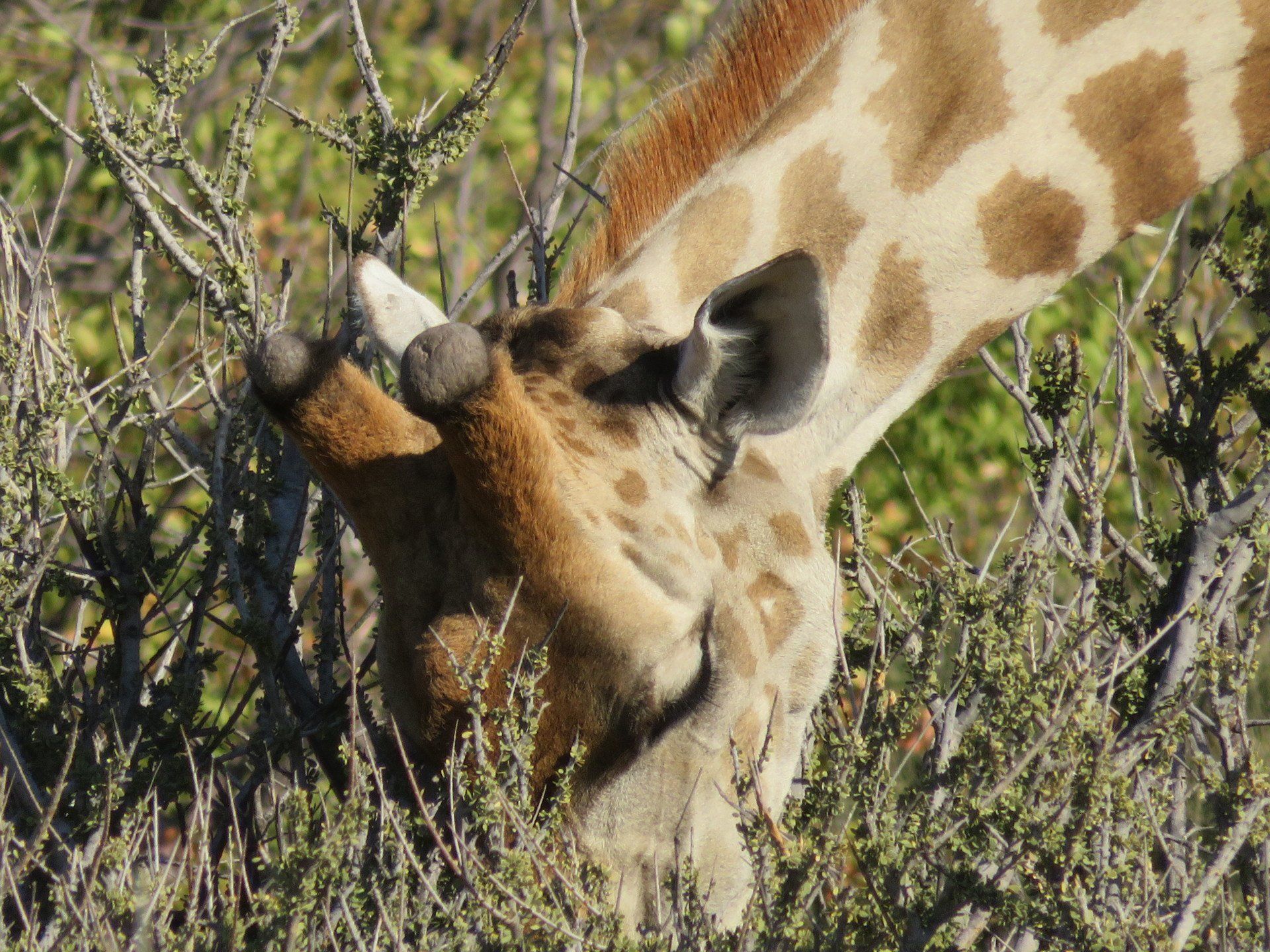
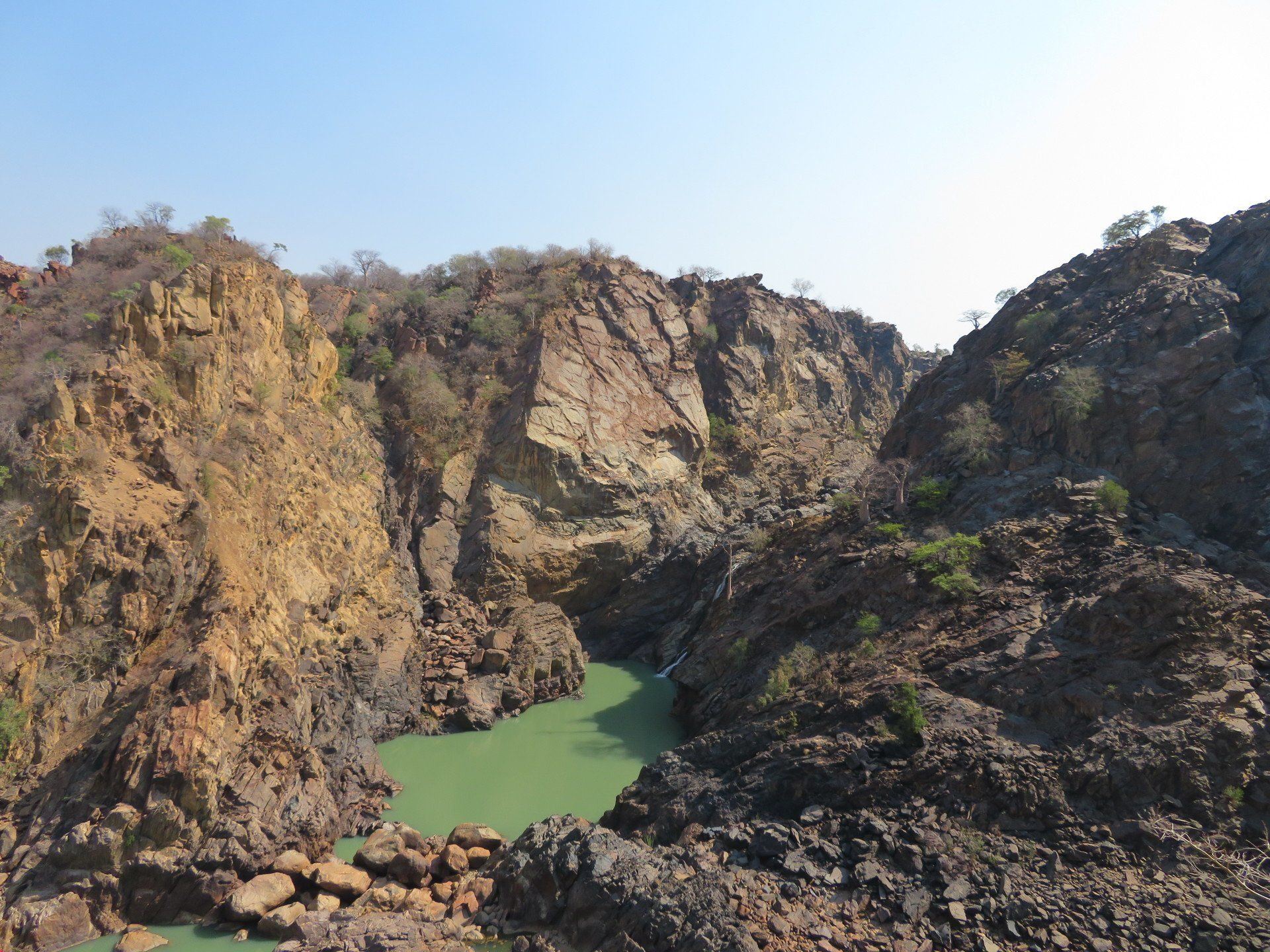
Day 3: The adventure begins: Ondangwa – Oshikati – Lubango
Today we left early again and made our way to the border. On the Namibian side, everything was easy and went quickly until we arrived in Angola. For South African passport holders, it is quick as they are visa exempt. But traveling with a German passport may take a bit longer. In the end, we made it and stepped into Angola.
Angola is known for civil war and violence – but our aim is to show the beautiful side of the country and prove that the worst times are over.
We continued our drive through the countryside with its small villages and our first impression was: friendly people everywhere and amazing baobab trees – each one bigger than the other.
Lubango became the major centre of the Portuguese settlement in the interior of southern Angola by the early 20th Century. Today, the streets are busy with colorful street vendors selling all different kinds of things and the houses are colorful with jacarandas, acacias and eucalyptus.
The streets of the city are laid out in a grid-iron fashion and there are not many robots or traffic signs - so driving is quite an experience!
We decided to use the beautiful afternoon light and drove straight to Tundavala. Tundavala is a breathtaking gorge cut out and the cliffs have a height of some 1000 metres going down. One can marvel at the scenery from the high clifftop at Tundavala, a viewpoint overlooking the spectacular gap of the Serra da Leba escarpment. Standing 2,200 metres (7,218 ft) above sea level, the rim features an observation platform over the plains stretching some 1,200 metres (3,937 ft) below. It was stunning!
After spending some time there and taking like a 1000 pictures, the sun slowly started setting and we had a real #myamazingafrica moment. It was incredible and hard to put into words – one would actually need to see the rock formations including the sunset and see for yourself. On the way back we stopped at a wide plain with a moonscape of weird shaped rocks. The rocks seem to lie on top of each other - all created by nature. It is a rock formation similar to the one at Giant’s Causeway in Ireland – an unreal viewing!
We stayed at Kimbo do Soba and after an early dinner, we went tired but happy, straight to bed.
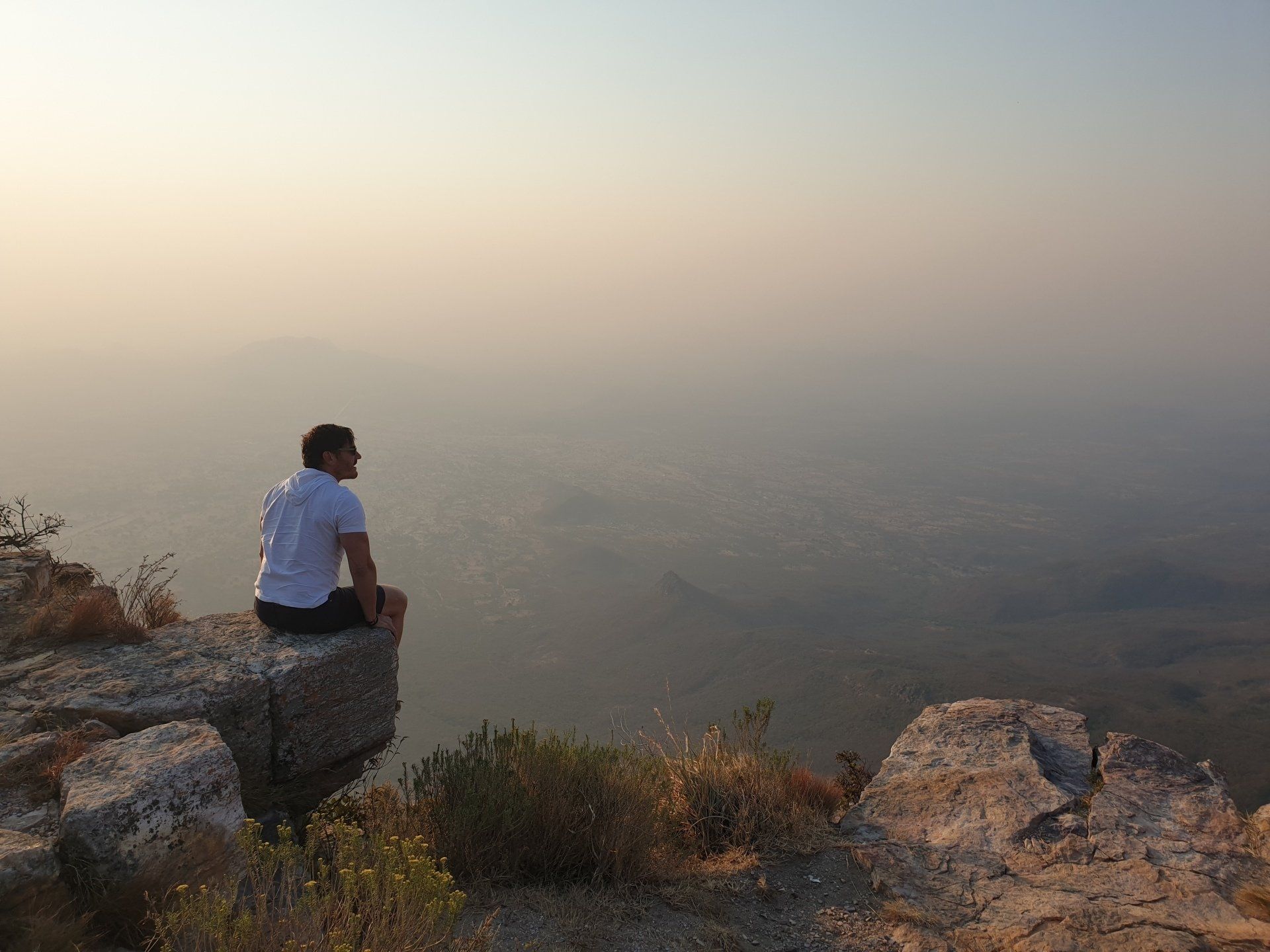
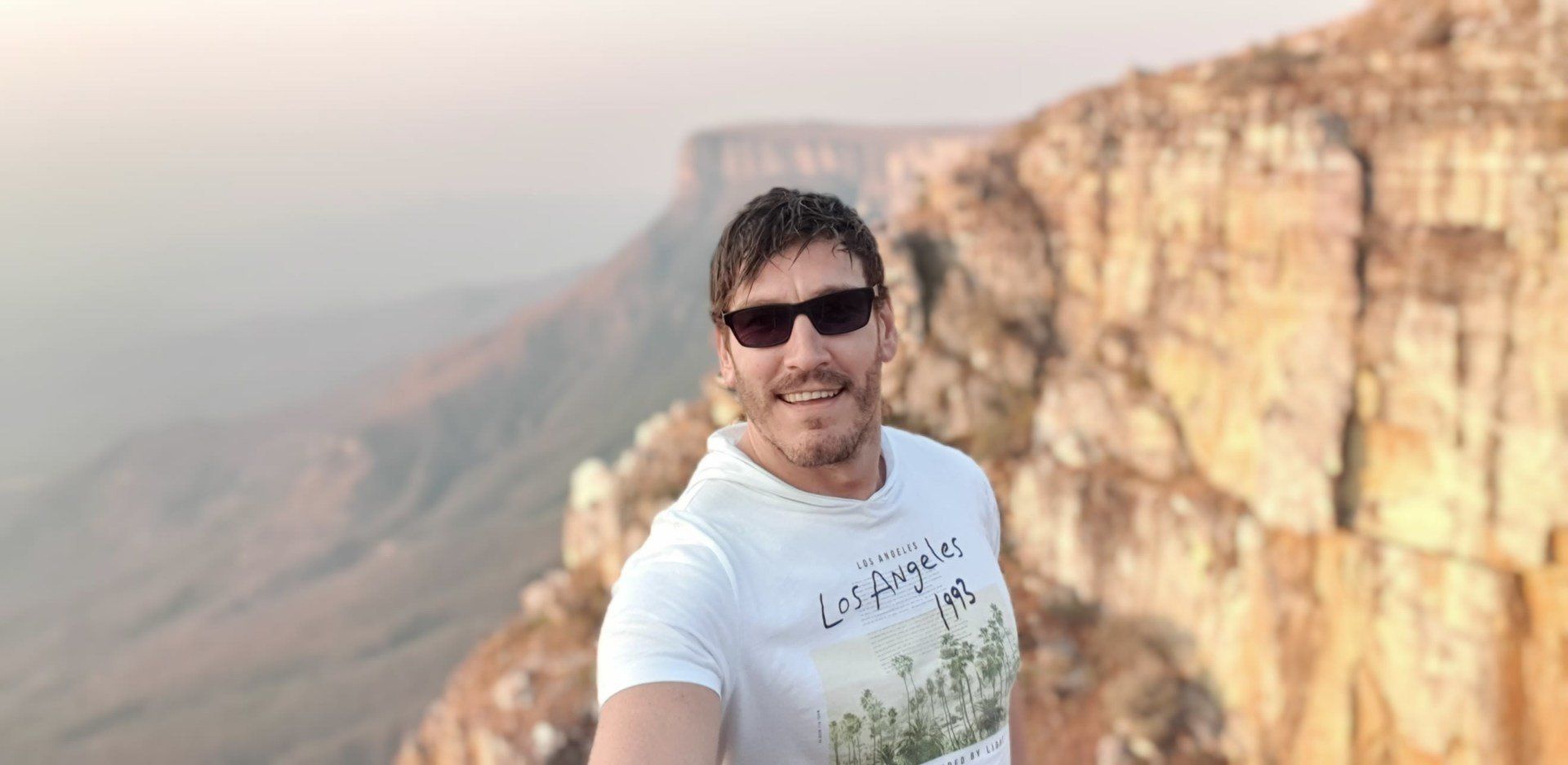
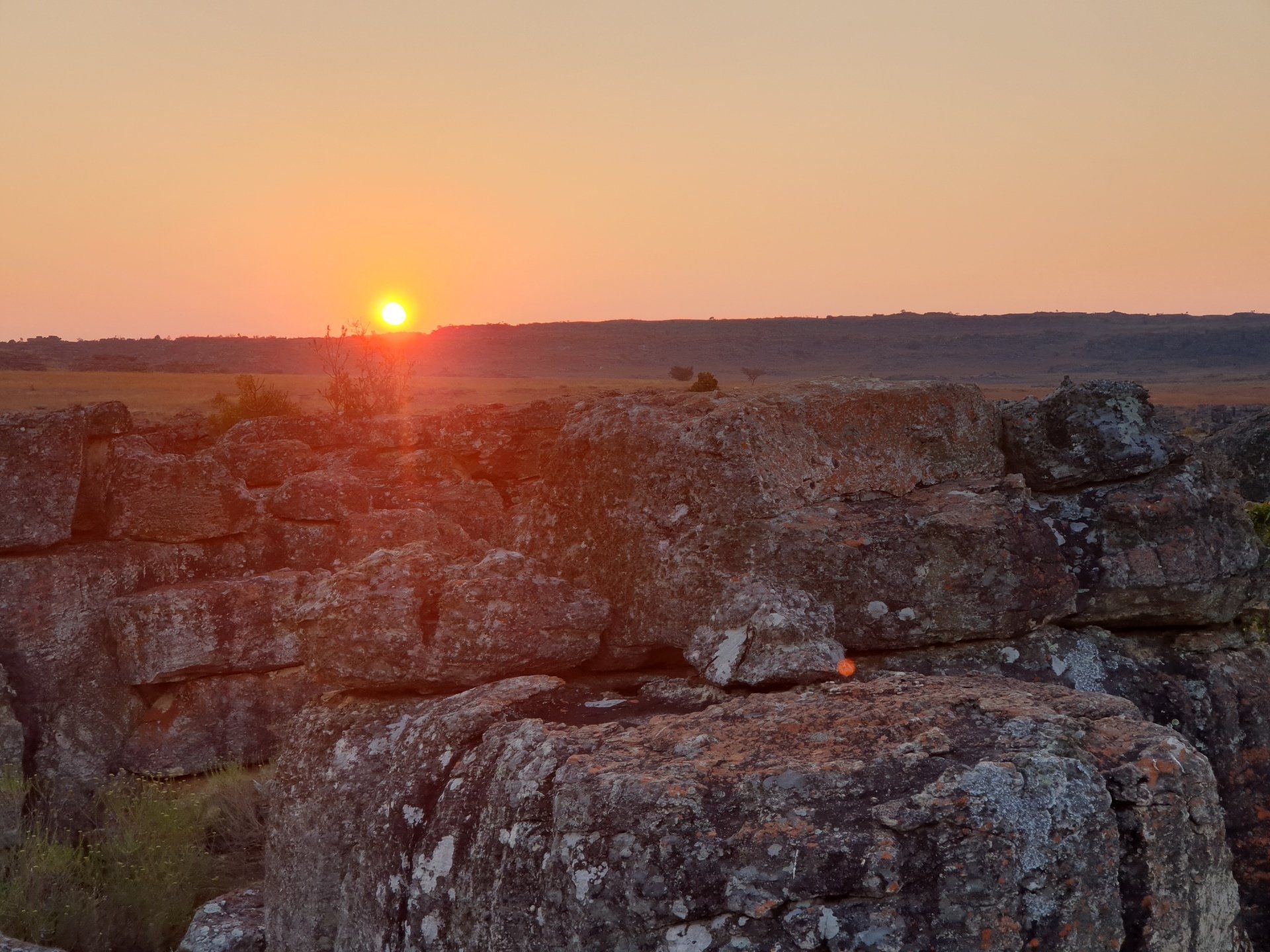
Day 4: Lubango – Namibe
Another early departure as we headed out for our big adventure: the Serra da Leba mountain pass. Seeing the pictures and YouTube videos, we were really excited as to what awaited us.
This breathtaking mountain road, which was built in the 1970’s, spirals down from the 'plano alto' (high plateau) elevation of 1845 metres to almost sea level in just over 10 kilometres; literally transversing 3 or 4 different climate zones during any ascent or descent.
Being one of the country's postcard images for decades, the road is a marvel of engineering given the era of its construction. In spite of its beauty, the road offers little guard-rail protection and has been the venue of many road fatalities; thus bearing the long assigned name 'the beautiful precipice'. Along the pass there are several viewpoints where you can see the road winding along the mountains. It is an adventure driving the road – especially with trucks and speeding mini busses – but absolutely worth it. Unfortunately for us, the weather was misty but it was still worth doing as we knew that we would not have a second chance driving up. At the bottom of the pass, there are people selling food and souvenirs along the way. We continued straight to Namibe, a fishing town right at the bay, with spectacular cliffs and then met our local guide, IU Namibe, at our hotel to show us the highlights.
We started our tour and pretty soon we realized why it is important to have a local guide: he guided us and showed us roads, off the main road which hardly looked like proper roads. We drove for 45 min through deserted areas and on roads which just look like some tracks in the sand when all of a sudden we arrived at Las Colinas.
The big towers carved by nature reach up to 25 metres high. Shaped for centuries by wind, the rocky monuments color the region in beautiful shades of red and produce gigantic leftovers on the desert floor.
It was an absolutely breathtaking experience being in the desert and standing between those huge rocks!
After that we headed to Arco, a freshwater oasis in the middle of the desert. We parked our car here and did a 30 min walk to and around the shores, which gave us great views over the lake. It hasn’t rained for the last 8 years but it still has water – incredible!
And the colors are incredible, too: the yellow of the sandstone, the blue of the lake and the green of the vegetation – mother nature is simply stunning!
Afterwards, we drove for one hour deep into the desert following the road less travelled and up and down the sand dunes – that was fun!
Also seeing the desert on the left side and the ocean with its waves on the right was not usual scenery.
After this long and adventurous day we went for dinner at the beach in one of the many fish restaurants to try the local catches – highly recommended by us – the fish was so fresh and tasty.
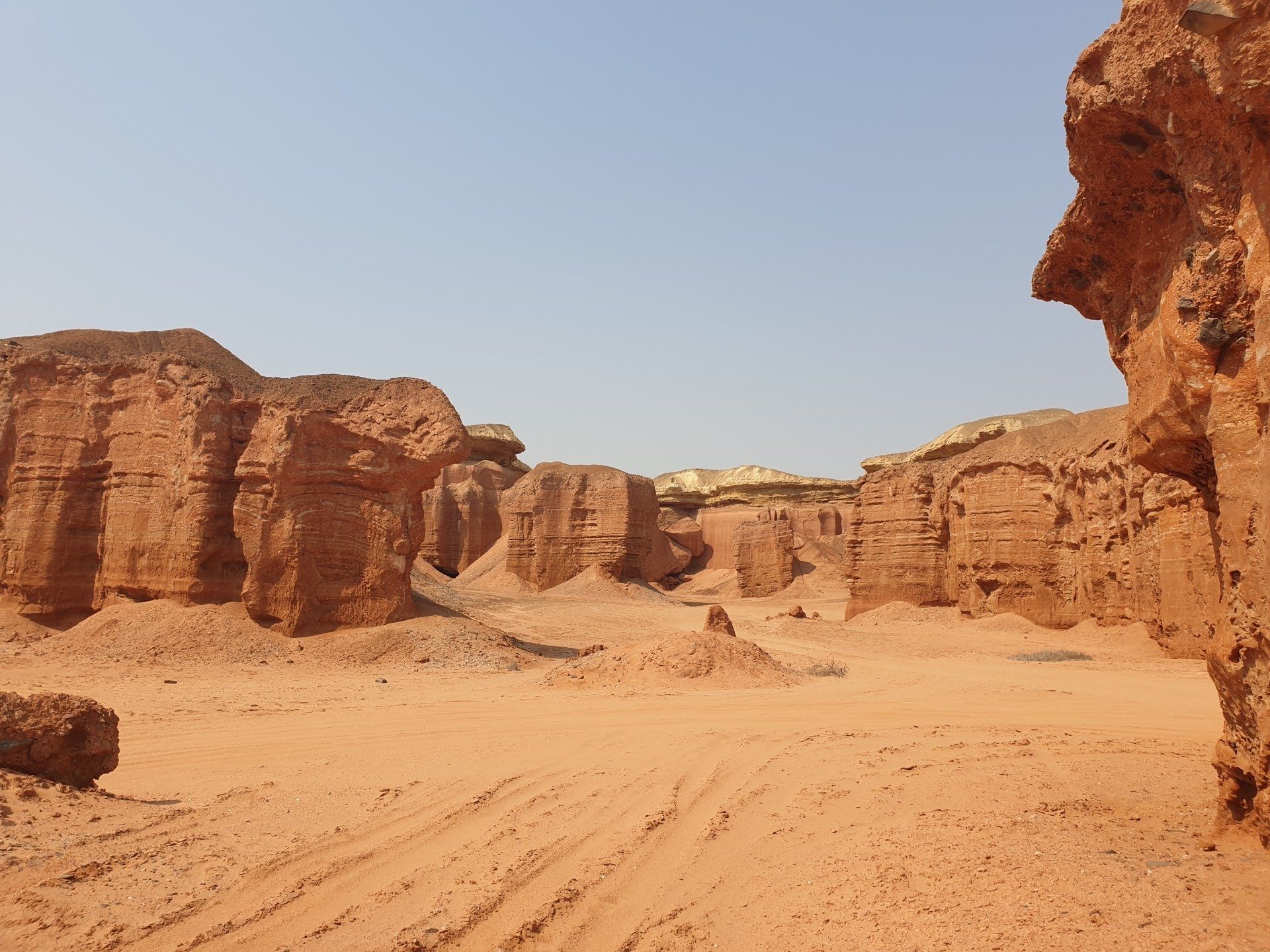


Day 5: Namibe – Lubango
We got a second chance for the mountain pass Serra da Leba today and we were very lucky as the weather was perfect. We went up again through the hairpin bends and stopped at every single viewpoint again to take pictures and videos. Our tip is, if you reach the top of the pass and stop there, you don’t have to stop at every viewpoint. From here you simply have the best view.
Our next stop was Cristo Rei – the statue of Christ being 300 metres above the city of Lubango. From here we had an amazing 180 degree view onto the city with the 30 metres tall statue behind us. If you look carefully at the statue you still see the “wounds“ from war: bullet marks on his face. We then headed to the big “Lubango“ signpost – similar to the one in Hollywood. A nice fotostop to see the town, Christ statue and sign.
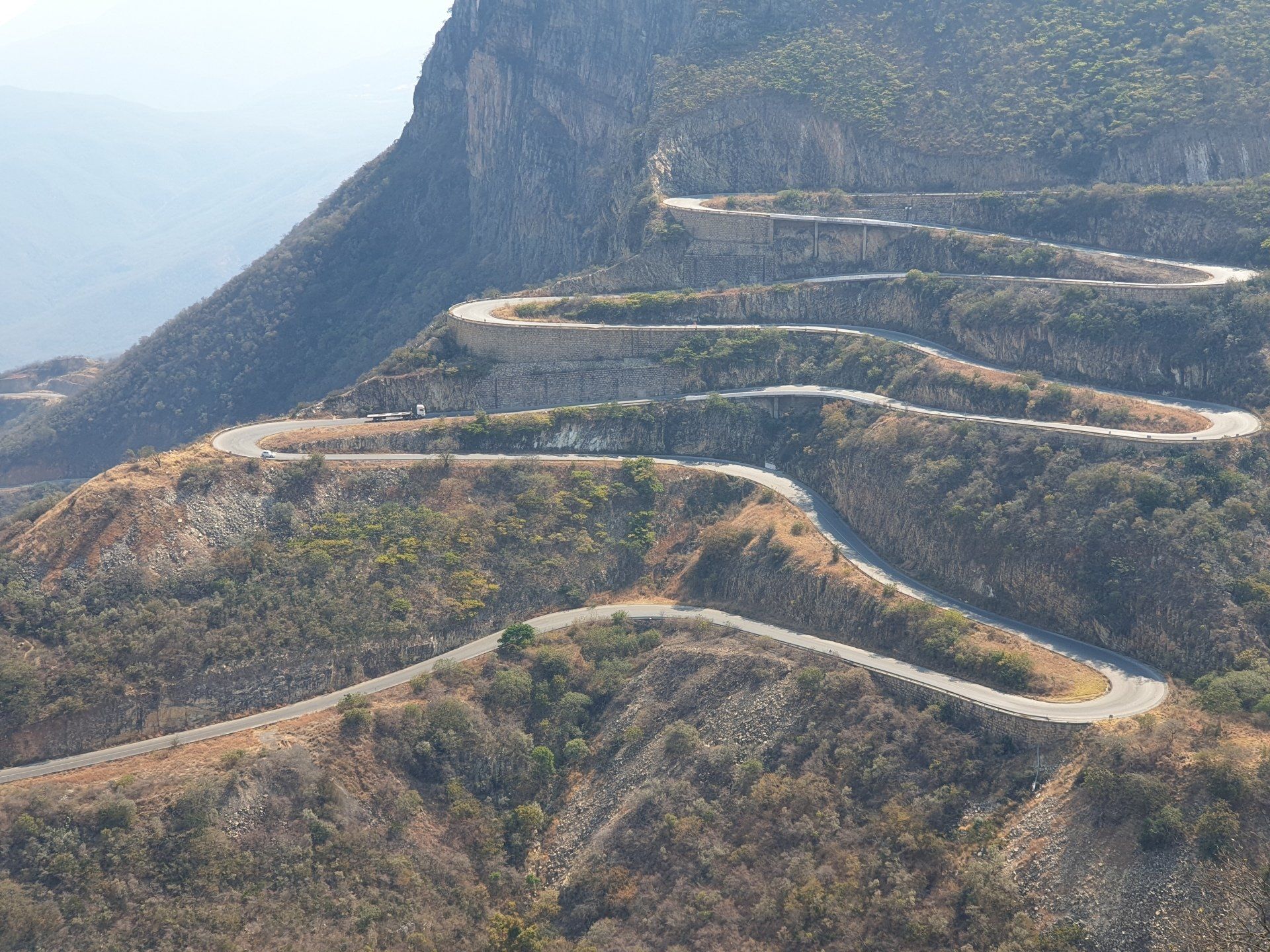
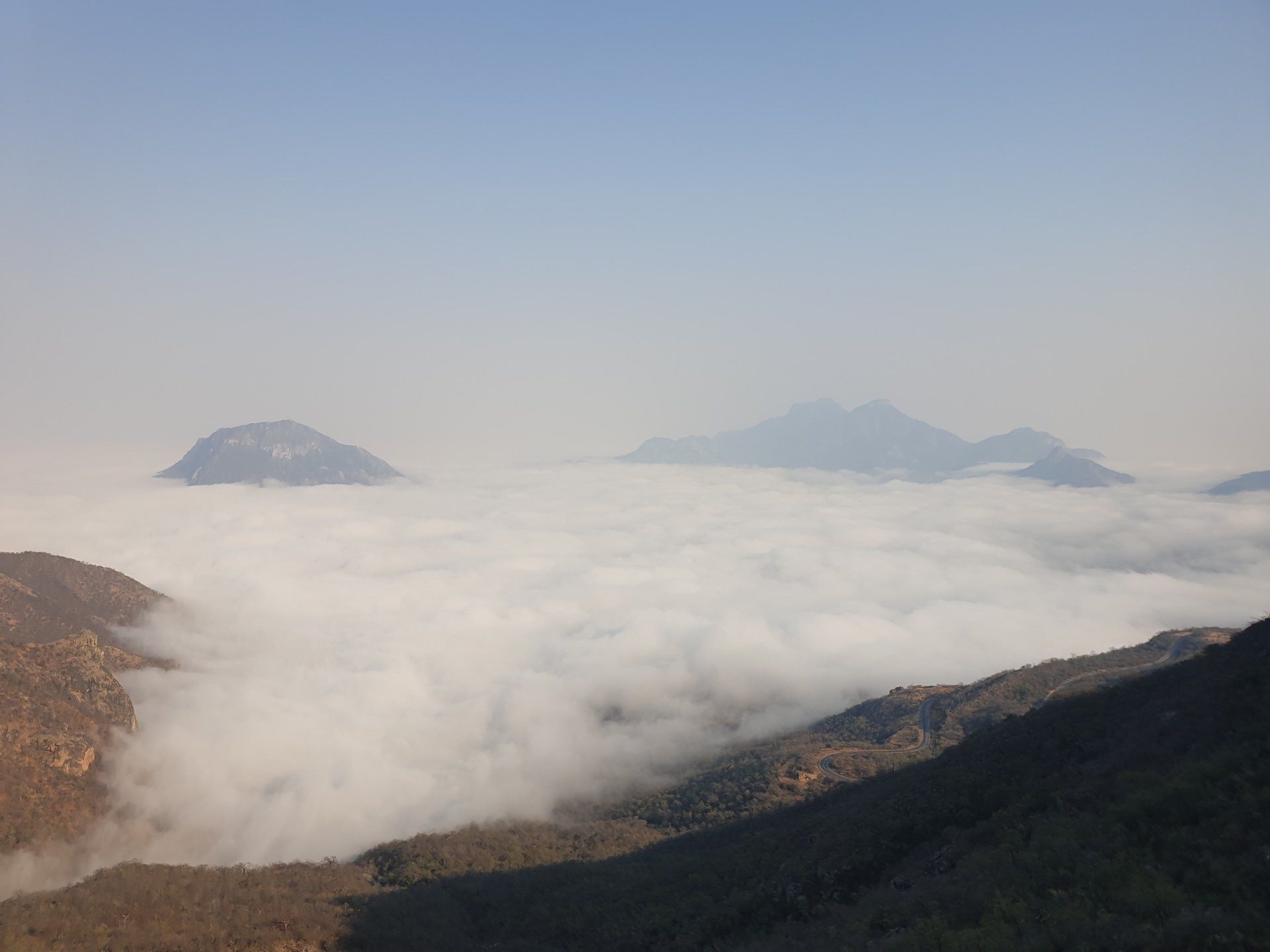
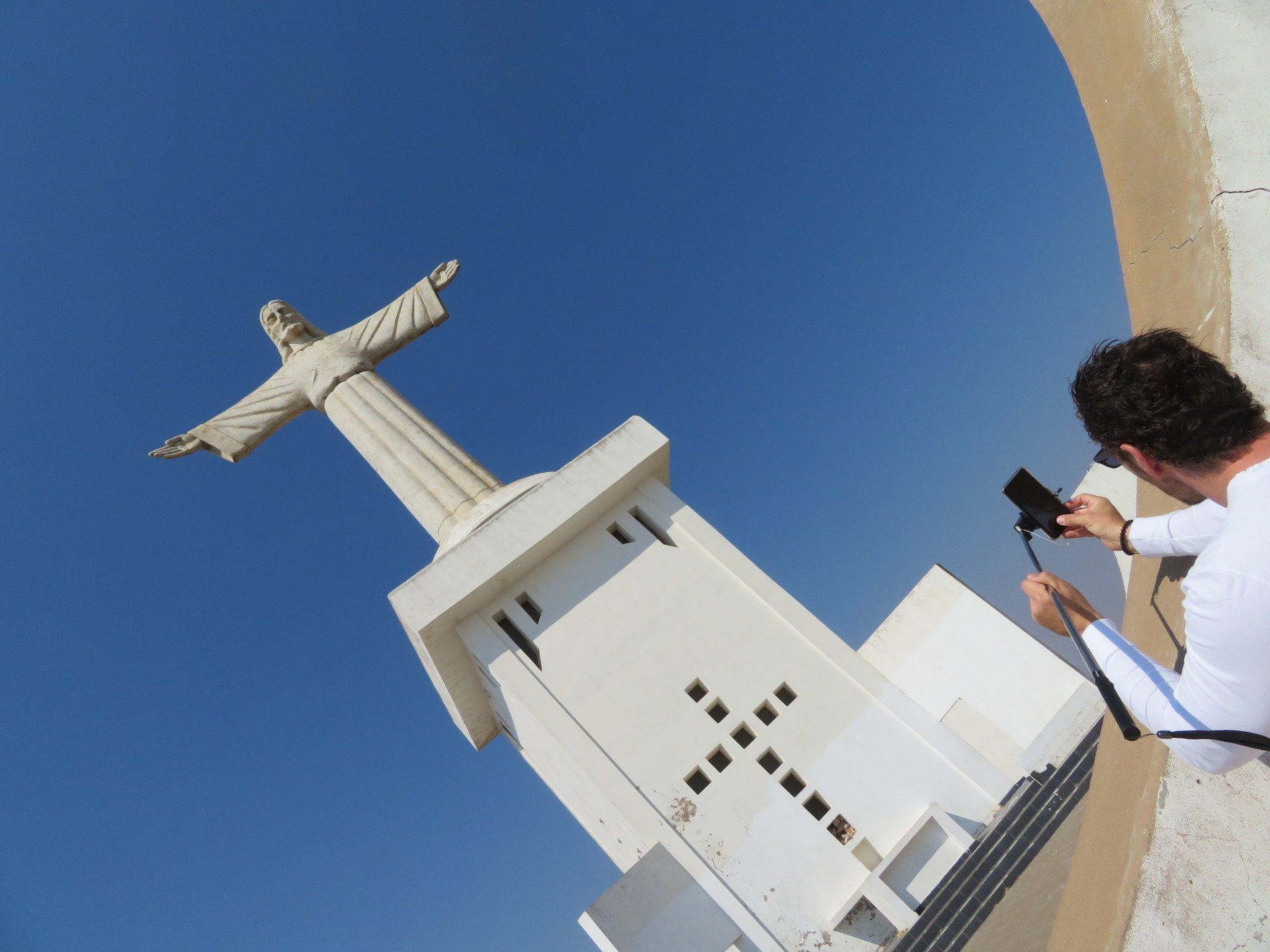
Day 6: Lubango – Lobito
Today we drove about 7 hours due to the bad condition of the road. The main roads are being fixed and tarred at the moment and because of that, the main traffic is rerouted to very bad gravel roads with potholes where you can hide a suitcase! But as soon as the main roads are fixed it is most likely to be a nice road to travel. The countryside is beautiful – baobab trees, rivers, bridges and kids and women washing in the river.
We managed to arrive at Lobito right on time for a sundowner right at the beach of our hotel: Hotel Terminus. The dinner in the restaurant was our best dinner in Angola so far.
The location of the hotel is great. It is right at the beach with beach lounges and tables to relax during the day and later enjoy the sunset.
Day 7: Lobito – Luanda
Today we left early again as we had another transfer day to cover the distance between Lobito and Luanda. The road conditions didn’t improve from yesterday, but that’s just Africa ;)
We met friendly people everywhere who spoke to us in a mixture of Portuguese and English and/or with their hands and feet. Halfway to Luanda, we saw enormous cliffs and came to the Shipwreck beach – it was an impressive picture with the long sandy beach, the ocean, waves and the cliffs.
We passed the Kissama National Park heading towards Luanda – here you have stunning views of the Kawa River. The Kissama National Park is about half the size of the famous Kruger National Park. Due to the war, almost all animals have been wiped out, but the Kissama Foundation is trying to restock the park to its former glory. We arrived at the busy and bustling suburbs of Luanda just after sunset and continued to find our way to the hotel. Driving in Luanda is not that easy, so an experienced driver in a 4x4 vehicle is recommended. Luckily we had a very good and cautious driver and got well to the hotel. The Hotel Continental is located right at the Promenade of Luanda with a nice roof-top terrace to enjoy the city.

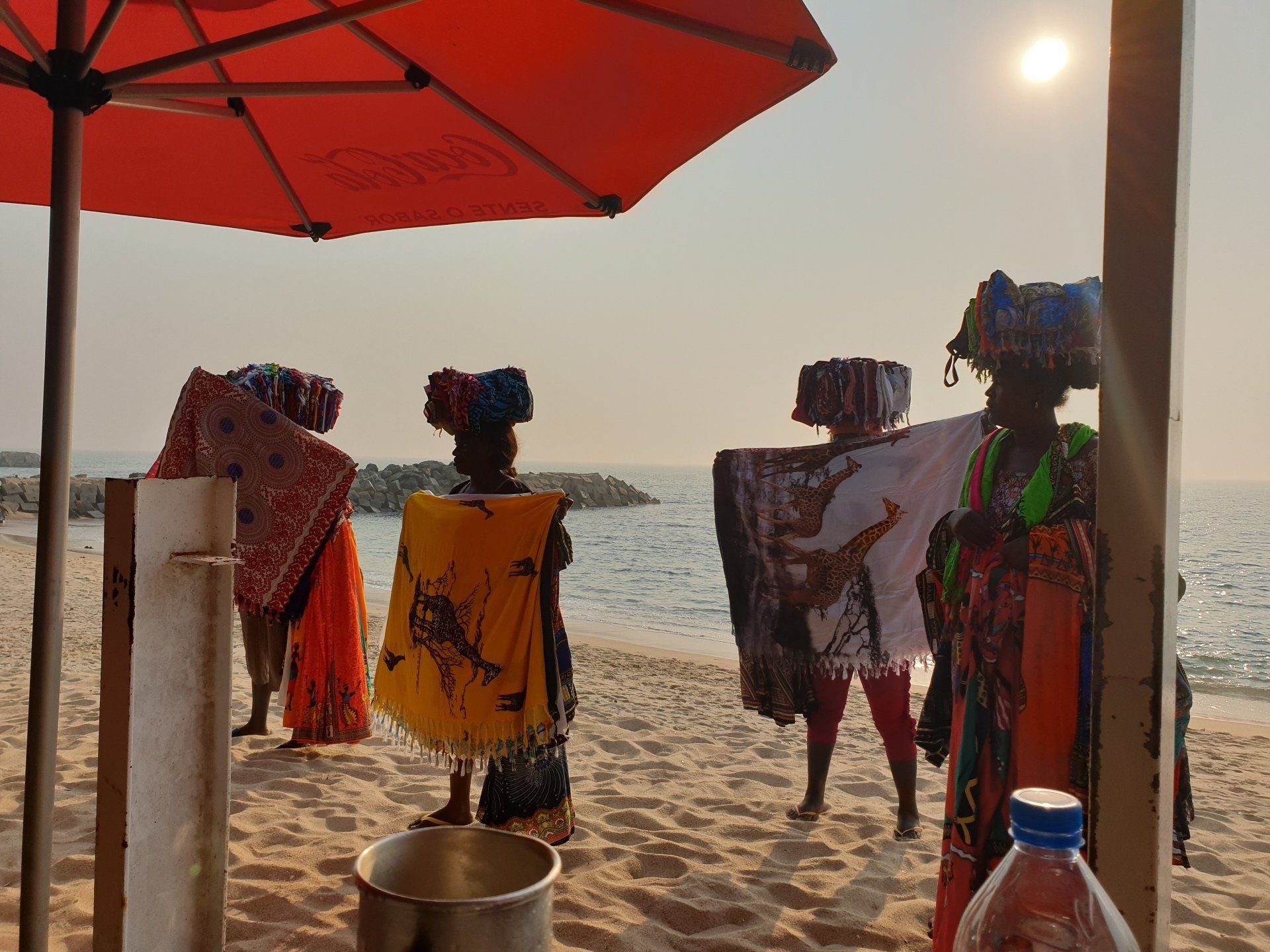
Day 8: Luanda – Pungo Andongo – Malanje
We met for a sunrise walk along the promenade while the city slowly awakened. After a short breakfast, we left the hotel at 07 am and headed east. Our goal for today was the Pungo Andongo Rocks.
The roads out of Luanda during daylight are easier but still very busy and as all robots (did you know we call traffic lights “robots” in South Africa?) were out. It was kind of an organized chaos and we had to try and find our way, so it’s best to be prepared and pay attention while driving here. We arrived at Pungo Andongo – the famous black rocks. As you take the road going to the rocks they magically appear out of nowhere. The black rocks cover an area of 6x12 kilometres and many of them are higher than 200 metres above the flat savanna. From a geological point of view, the rocks are a mystery – they are hard sedimentary conglomerates but they are out of character with the surrounding topography. We went on top of one of the rocks and from there we had a breathtaking view over the valley and the other rocks surrounding us.
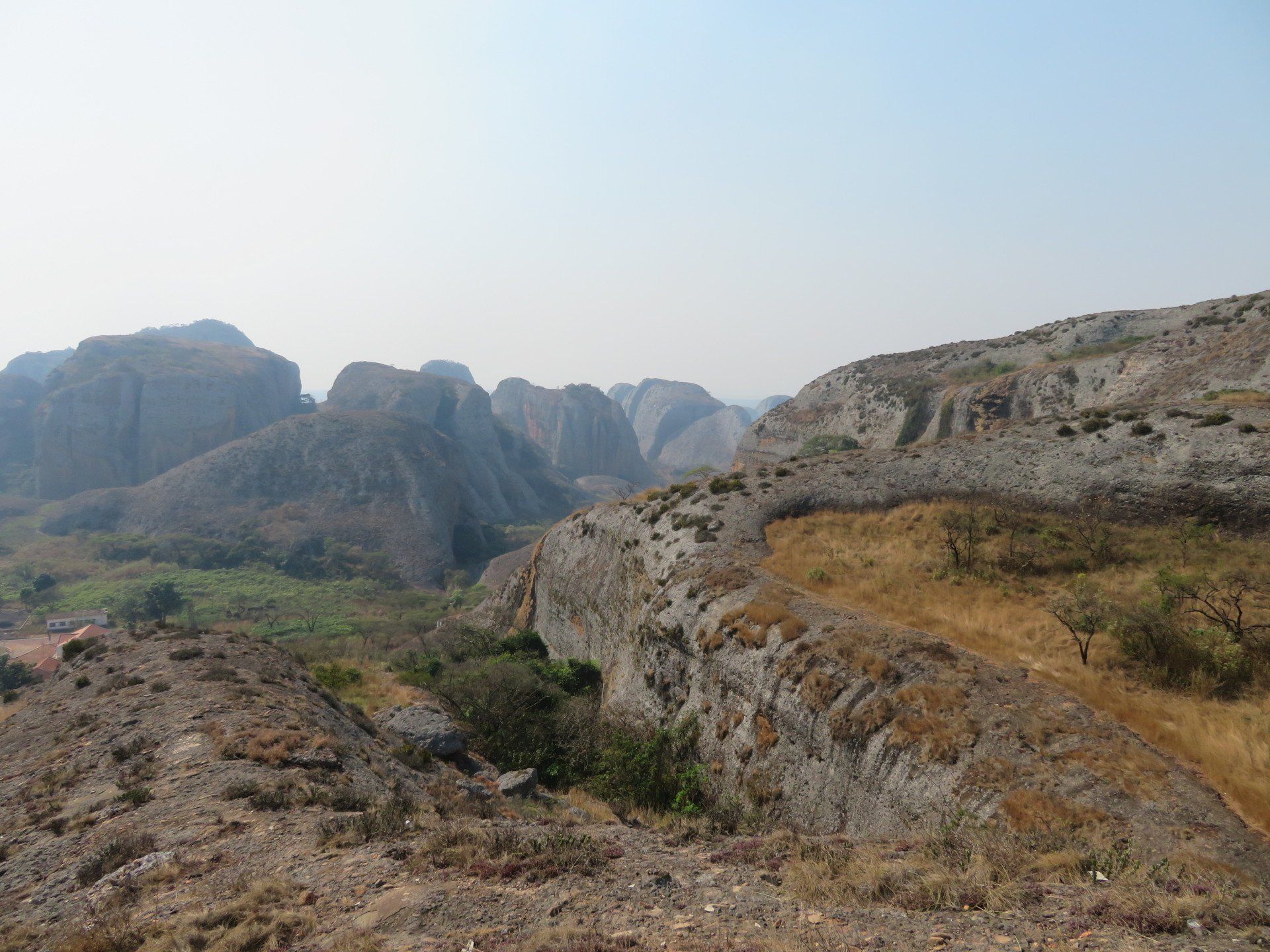
Day 9: Malanje – Kalandula Falls – Malanje
The whole day was filled with the Kalandula Falls. They are one of the highest in Africa with a drop of 105 metres and a width of 410 metres. They are one of the most impressive natural wonders of Angola – although not very well known. There are two roads going to the Kalandula Falls and we decided to start with the one on the left. Here you have a viewing platform, where you can have a close view of the falls and take a walk on the rocks and see the water running and falling down. Really an impressive sighting!
Our tip: drive the other road, which will lead you to a hotel/restaurant with a perfect view over the falls.
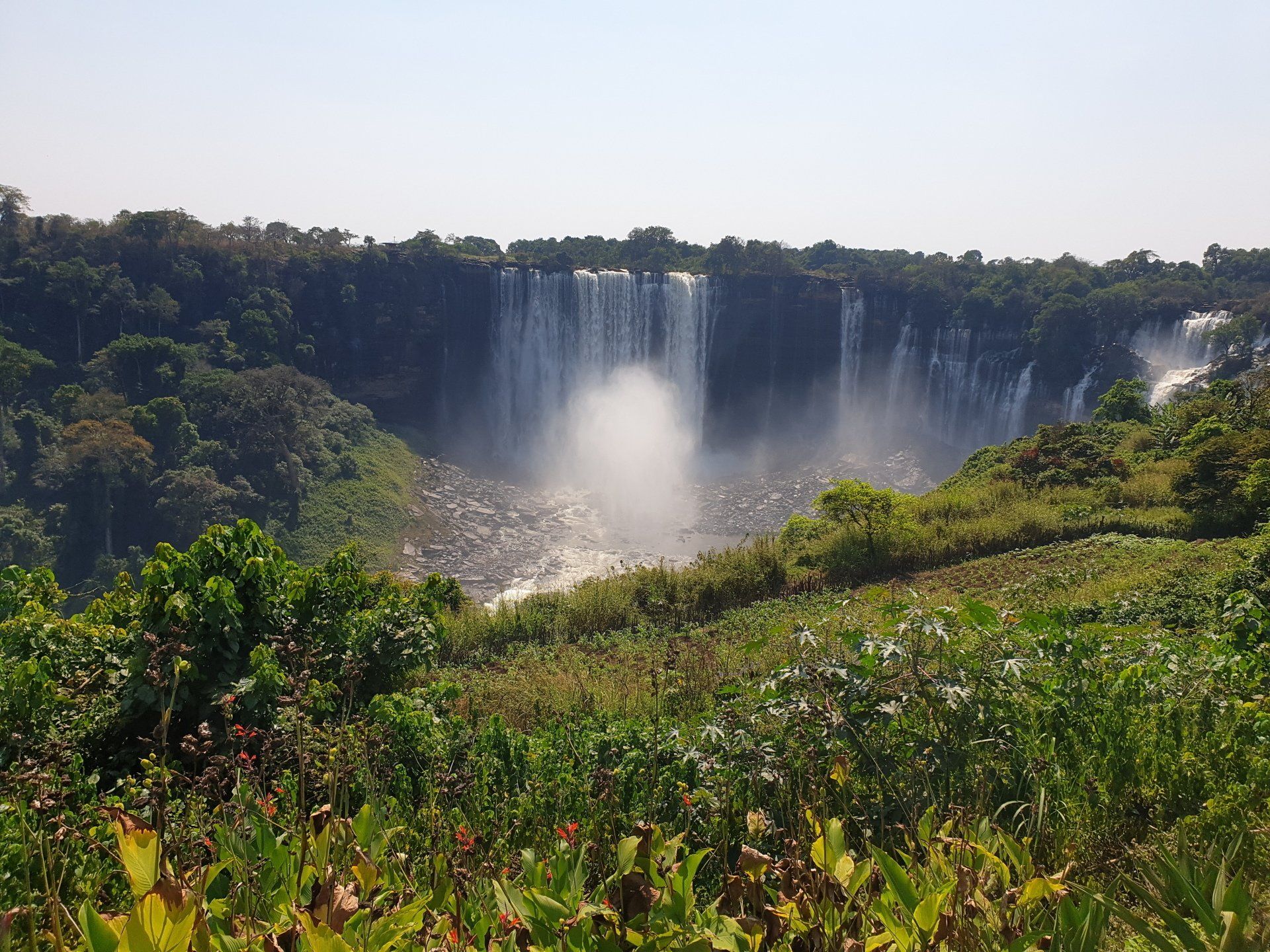
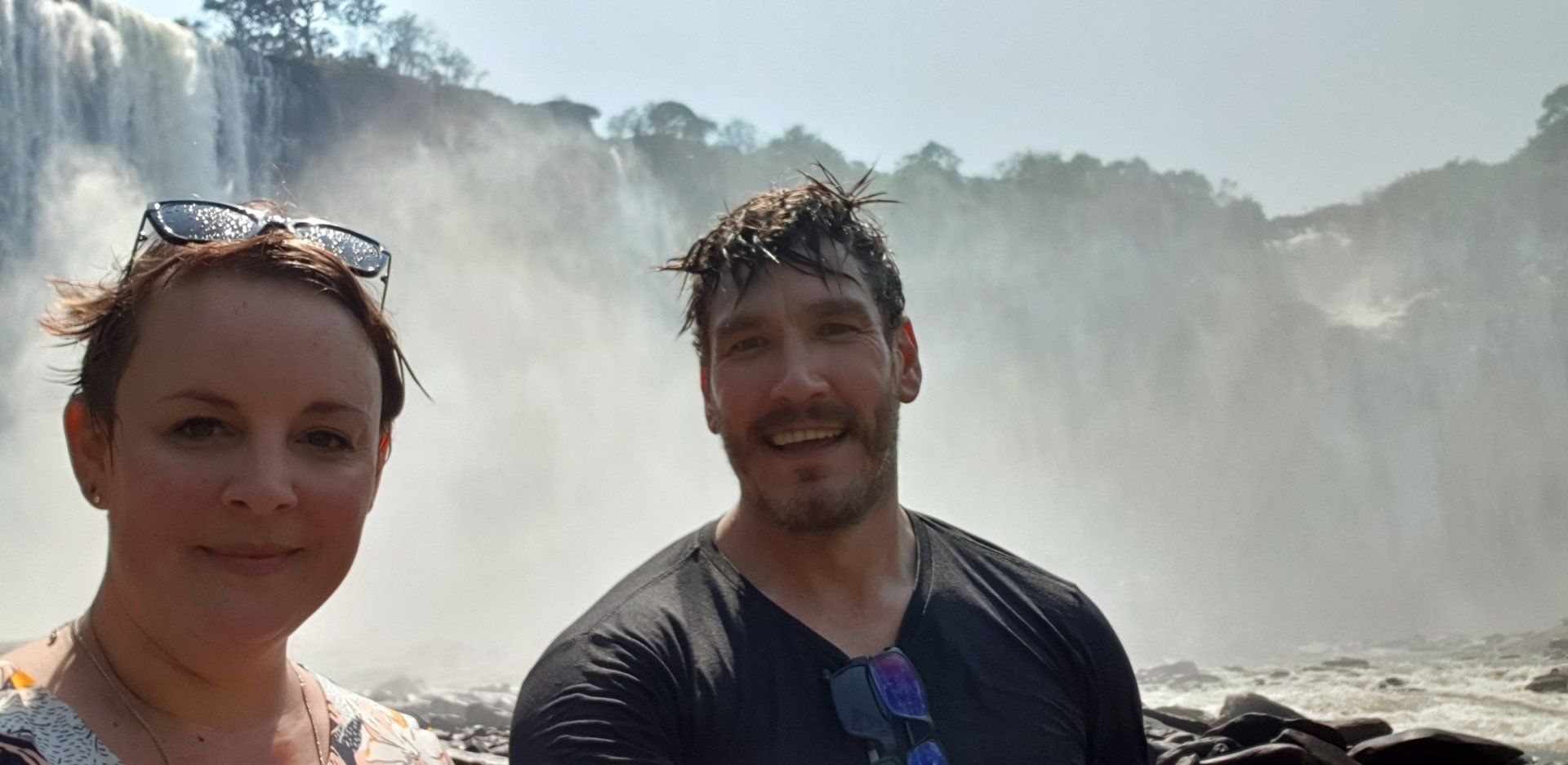
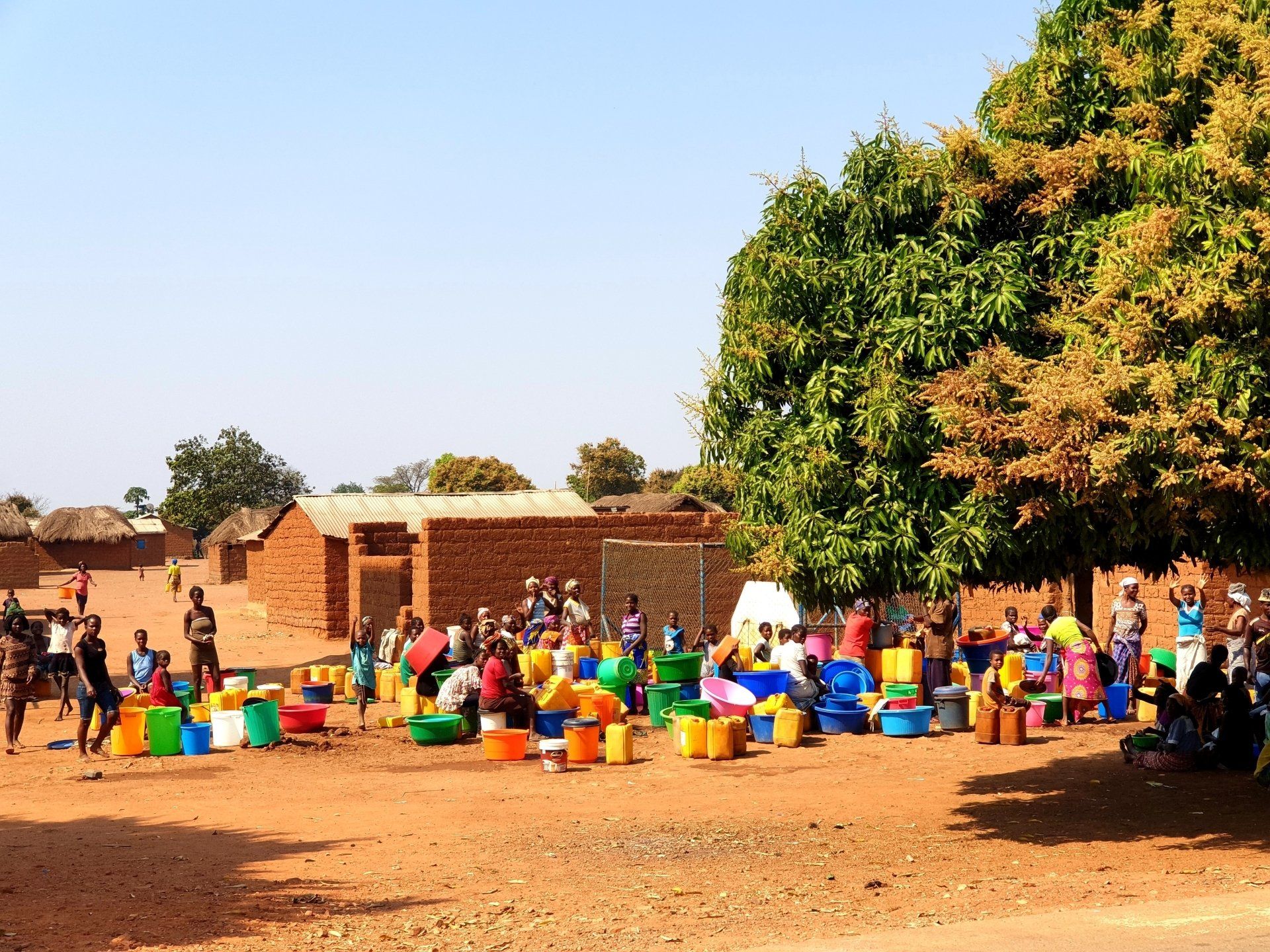
Day 10: Malanje – Luanda
Today we drove back to Luanda. As the road was very bad coming to Malanje, we decided to try and drive off the beaten track into rural Angola. We drove through small villages and saw rural Angola with its lovely people greeting us everywhere along the way.
Back in Luanda, we went straight to the Fortaleza de São Miguel, which was built in 1576 and was the administrative centre of the colony in 1627 and a major outlet for slave traffic to Brazil.
The fort was for many years a self-contained town protected by thick walls encrusted with cannons. Inside the fort, elaborate ceramic tiles tell the story of Angola from early years. From the top you have great views onto Luanda and the promenade, as well as, the famous Ilha with restaurants and bars.
After we checked-in at the hotel we drove to the Ilha – which consists of a low sandy strip formed by sedimentation. It is connected with the city through a narrow passage and is located at the foot of the Fortress of São Miguel.
Here we sat right at the beach enjoying some sundowners, sea food and watched a stunning African sunset before we headed back to the hotel.
Day 11: Luanda
About 35 kilometres north of Angola's capital, Luanda, lies a stretch of beach that is an eerie resting place for more than 20 derelict and rusting ships. Known by locals as Praia da Santiago or Praia do Sarico, the 2.5 kilometres stretch of beach is better known as Shipwreck Beach or Karl Marx Beach, named after the biggest shipwreck on the beach. Off shore and along this stretch of beach are dozens of rusting hulks of tankers, cargo ships and fishing vessels. Many legends have been passed along concerning how the large ships mysteriously arrived there in local folklore, while some truly interesting mercantile history and cold war history lies behind their real stories as well. But in reality, with the absence of salvage facilities, the most likely explanations for this site is that the ships were removed from Luanda harbor after being unseaworthy. Anyway, it is truly an incredibly photogenic spot.
We walked along the beach and saw these huge ships stranded and lying alone on the beach – a strange picture especially as no one knows how or why these ships ended up at that beach at all.
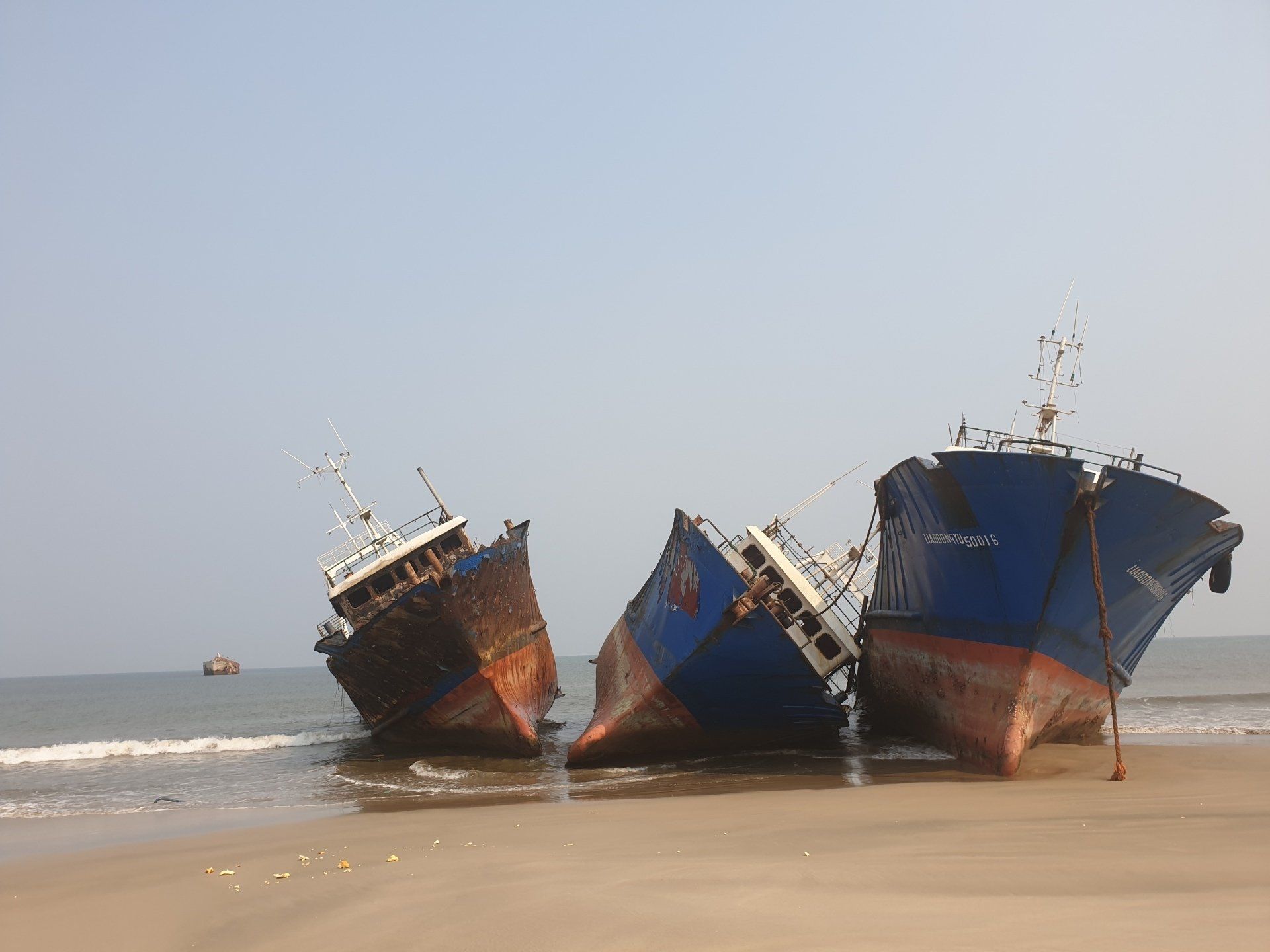

Day 12: Luanda – Mirador da Luna
Today we drove south of Luanda to the Mirador de la Luna, a mandatory tourist stop. It is a group of cliffs, about 40 kilometres south of Luanda, in the municipality of Samba. Over time, the wind and the rain created the lunar-like landscape there.
We enjoyed the "Grand Canyon" of Angola, unique on the planet and only found similar in the Republic of Congo in much smaller formations, and in Madagascar in grey color. These are the only cliffs in Africa with this geological formation of stunning almost Martian beauty.
On the way back to Luanda we stopped at the slave museum. The museum adjoins the Capela da Casa Grande, a 17th-century structure where slaves were baptised before being put on slave ships for transport to the Americas.
In the afternoon we enjoyed some time in Luanda, walked through the city, did some souvenir shopping and enjoyed sitting at the promenade having great views over the capital.
Day 13: Luanda – Johannesburg
Early in the morning it was time to say goodbye to Angola. A great trip through an amazing country came to an end and we had to leave for the airport to catch our flight back to reality in South Africa.
It was an amazing trip through a really fascinating country, which is about to attract a lot of tourism. It has an absolutely incredible landscape and interesting cultural heritages – we are already looking forward to coming back!
Find here some more impressions of Angola (more coming on our Flickr-Account @amazingafrica):
